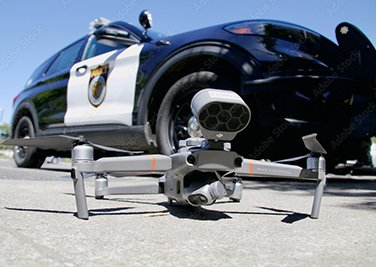Policing Technology
The Problem
Technological innovations have the potential to make our society safer, but communities have concerns about the privacy, reliability, and bias that may exist in technologies used by police. This problem is worsened because, too often, police do not inform the communities they serve about which technologies they’re using. Police often also do not collect or share data about their technology use and how these technologies function in the real world. In addition, police may be using emerging technologies without seeking authorization to do so from democratically elected bodies.
The Solution
The Policing Project is not for or against technology, but instead we are focused on ensuring that the technology used by law enforcement is used responsibly and with democratic oversight and accountability. Lawmakers, not police, should carefully assess the benefits and costs of new technologies, and if lawmakers decide these technologies are appropriate for their communities, they should create guardrails to mitigate harms from privacy invasions, overpolicing, and bias. The Policing Project has created a series of resources for different types of policing technologies to guide lawmakers as they weigh these competing considerations.
To view our two-pager summarizing the key provisions of our policing technology statutes and guidance, click here.
Technology Model Legislation, Guidance, and Resources
Authorized Police Technology (APT) Act
The APT Act is model legislation that would require law enforcement agencies to seek approval for their use of new and existing technologies and to collect and publish about technologies they are using.
For more information about the APT Act and its development, click here.
To read the APT Act, click here.
Authorized Databases and Police Technology (ADAPT) Act
The ADAPT Act builds on the APT Act by including databases, like fingerprint databases, DNA databases, gang databases, automatic license plate reader databases, and more.
For more information about the ADAPT Act and its development, click here.
To read the ADAPT Act, click here.
Facial Recognition Technology (FRT):
For the Regulating Police Use of Face Recognition Technology—Resources for Legislators guide, click here.
For more resources and information about FRT, click here.
Automatic License Plate Readers (ALPRs) :
The Poling Project’s ALPR Model Statute will be available in Fall 2022.
Fusion Centers:
The Policing Project’s Fusion Center Statute is forthcoming in Fall/Winter 2022.
To read more about our Oregon fusion center litigation, click here.
Lateral Surveillance
The Policing Project’s Lateral Surveillance Policy Framework is forthcoming in Fall/Winter 2022.
To read more about the Policing Project’s civil rights audit of Ring, click here.
For other resources and information about lateral surveillance, click here.

